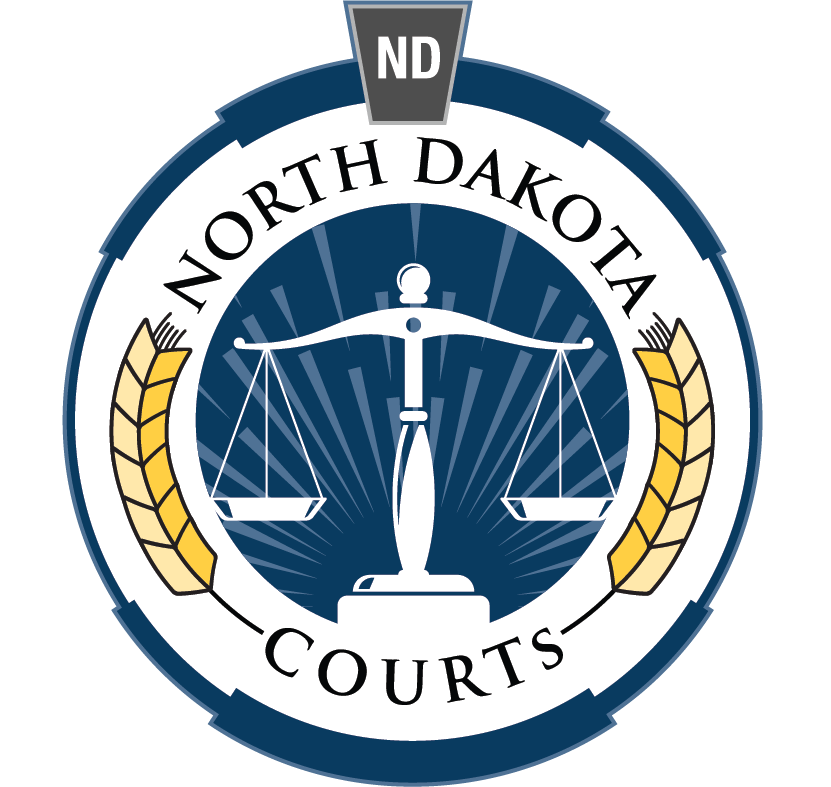Start a Divorce on Your Own (Plaintiff)
Overview
The information and forms on this page are for spouses who want to get a divorce, but:
- The other spouse doesn’t agree to the divorce in writing (see File for Divorce Together – No Children and File for Divorce Together – With Children); or
- The other spouse can’t be located.
One spouse, the Plaintiff, may start the divorce by arranging to serve a Summons and Complaint for divorce on the other spouse, the Defendant. In North Dakota, serving the summons and complaint starts the divorce. Filing the summons and complaint doesn’t start the divorce.
Contested divorce involves a lot steps! Each step comes with deadlines and paperwork. Following are the basic steps in a contested divorce.
|
The Basic Steps for a Contested Divorce |
|
|
Step One: |
The contested divorce process begins with the Plaintiff spouse starting the divorce process by completing the 1) Summons, 2) Complaint, and 3) Confidential Information Form documents. Scroll to Step One on this page to choose the correct packet of forms for your circumstances. Read and follow the instructions to complete the forms for Step One. |
|
Step Two: |
The Plaintiff spouse arranges to serve a copy of the divorce 1) Summons and 2) Complaint on their Defendant spouse. Plaintiff spouse receives proof of service from the person who served the 1) Summons and 2) Complaint. Scroll to Step Two on this page for service instructions and forms. Read and follow the instructions for Step Two. |
|
Step Three: |
The Plaintiff spouse awaits 21 calendars days to see if their Defendant spouse answers in writing. If the Defendant spouse answers in writing, go to Divorce Case Management. Both spouses are responsible for meeting a lot of deadlines and completing a lot of paperwork. If the Defendant spouse Doesn’t answer in writing, go to Motion for Default Divorce Judgment. The Plaintiff spouse may ask for a default judgment if the Plaintiff can prove their Defendant spouse was served and didn’t answer in writing within 21 days of service. |
|
Step Four: |
Both spouses must prepare for their divorce trial. If the spouses can’t settle all of the issues in their divorce and reach a settlement agreement, a divorce trial is scheduled. Go to Preparing for Your Divorce Trial for more information and legal research resources. |
|
Step Five: |
After the divorce trial, the judge may require one or both spouses to prepare proposed Findings of Fact, Conclusions of Law and Order for Judgment for the judge to sign. Go to Get the Final Divorce Judgment for instructions and forms. If the Defendant spouse didn’t answer the Summons and Complaint in writing in Step Three, go to Motion for Default Divorce Judgment. |
Step 1: Fill out the Forms to Start a Divorce
The first step to start a divorce on your own is to prepare three required documents:
- The Summons is the document that notifies the Defendant spouse that the Plaintiff spouse is starting the process to get a divorce. The summons has restraining provisions that both spouses must obey. When a Plaintiff represents themselves in a divorce, the summons isn’t valid unless it’s signed and dated by a North Dakota clerk of court.
- The Complaint is the document that gives basic information about the Plaintiff, Defendant, and the marriage. The complaint tells the Defendant and the judge the basics of what the Plaintiff is asking for in the divorce.
- The Confidential Information Form lists the full confidential information that isn’t allowed to appear in other documents filed with the court. This form is part of the court’s divorce record, but this form isn’t seen by the public.
North Dakota Legal Self Help Center forms aren’t official court forms and courts aren’t required to accept them. There’s no guarantee that all judges and courts will accept forms available through the Center. Use at your own risk.
Forms are available only for divorces involving common and uncomplicated circumstances. The following forms won’t work for every divorce. If the following forms don’t work for your situation, you need to create your own legal documents, or retain a lawyer to create the documents for you.
You may use the Center’s forms as templates to create your own legal documents. You may also find the General-Use forms in the District Court Civil Action Section of this webpage useful as a starting point for creating your own legal documents.
Forms to Start a Divorce With Children – Read the Instructions First!
Forms to Start a Divorce Without Children – Read the Instructions First!
Step 2: Arrange to Serve the Summons and Complaint on the Other Spouse (Defendant)
In North Dakota, a divorce starts when a copy of the summons and complaint are served on the Defendant spouse. The court doesn’t serve the documents for you.
Filing with the clerk of court doesn’t start a divorce. In fact, clerks of court can’t accept a divorce summons and complaint for filing without proof they were already served on the Defendant.
There are very specific ways the summons and complaint for divorce must be served. If you don’t arrange for service correctly, your divorce case may not move forward.
Review the service instructions and forms carefully. If you have questions, retain a lawyer to help you.
Service by Personal Delivery when you know where to find your spouse:
Service by Publication when you can’t locate your spouse:
Notice of Filing:
Step 3: Wait to See if the Other Spouse (Defendant) Answers
You, the Plaintiff spouse, need to take more steps to get a divorce. What you do next depends on whether your spouse answers the summons and complaint.
Your spouse, the Defendant, has 21 days after the date they were served the summons and complaint to answer in writing.
If your spouse answers the summons and complaint there are multiple tasks to complete and deadlines to meet. Go to Steps You Must Take Before the Court Can Grant a Divorce (Divorce Case Management) for instructions, forms, and other information.
If your spouse doesn’t answer the summons and complaint, you may ask for a default divorce judgment. If you can prove that your spouse was served and didn’t answer in writing within 21 days after service, go to Motion for Default Divorce Judgment. Instructions and fillable forms are available to help you make this request.
If the judge grants your request for a default divorce judgment, you’re divorced from your spouse.
If you don’t understand any of this information, or if you have trouble filling out any of the forms located here, consult a lawyer.
The information provided on and obtained from this site doesn’t constitute the official record of the Court. This information is provided as a service to the general public. Any user of this information is hereby advised that it’s being provided "as is". The information provided may be subject to errors or omissions. Visitors to this site agree that the Court isn’t liable for errors or omissions of any of the information provided.
If you have a question relating to a case that is already filed, contact the clerk of court for the county.

